Today I’m considering the fate of a particular music genre: big band.
Big band, swing band, stage band, dance band, jazz orchestra, whatever you choose to call it. It’s a genre defined more by its unique instrumentation than by any particular musical style. The classic format is five saxes (two altos, two tenors and a bari), four trombones (one of which may or may not be bass trombone), four trumpets (occasionally five), and a rhythm section, consisting typically of at least drum kit, bass (upright or electric), and piano, usually adding guitar, and occasionally auxiliary percussion, vibraphone, or even steel drums.
Music genres ebb and flow, and most tend to have a peak of popularity. Big band’s heyday was roughly the 1930s to the early 1950s. Then small combo jazz briefly took over, peaking in the late 1950s and early 1960s, before rock-and-roll (later losing the “-and-roll”) began its dominance for most of the last four decades of the 20th century. Then it was hip hop’s turn, followed by EDM-inspired pop. It’s hard to say if there even is a dominant genre today, largely because the Internet has allowed for an absolute explosion in the amount of music available, along with a fracturing of the audience into small niches.
The decline of a particular genre’s dominance in the zeitgeist does not spell its end. Genres continue to evolve and endure. Contrary to what you may have heard, rock isn’t dead. You just don’t hear much of the new stuff on the radio anymore, because “rock” in the popular conception has been cast in amber as being the music of the 1970s through the 1990s.
Small combo jazz didn’t die. In the 1960s it evolved rapidly through cool jazz, hard bop and post bop, with the tangential bossa nova genre spawning in Brazil and becoming a part of the jazz language worldwide. Late 1960s psychedelia brought free jazz and avant garde, and in the 1970s jazz went electric, merging with elements of rock and funk, as jazz fusion. This continued into the 1980s, although it arguably went a bit astray, as jazz musicians tried (and in my opinion, mostly failed) to find ways to incorporate the plastic sounds of early digital synths and drum machines into the mix.
Then the 1990s happened, and a retrograde movement — led at least in part by Wynton Marsalis and his influential role in Jazz at Lincoln Center — took over jazz. The genre tried to get back to its roots with acoustic instruments and a more straight-ahead style. The result was resurrecting some classic sounds that had been largely cast aside at the end of the 1960s, but in so doing, it also buried most of what had happened in the subsequent two decades, and once again, tried to cast the genre in amber. When I was studying jazz in college in the 1990s, I treated it as a (nearly) dead genre — in fact, I said as much in the postscript of my college thesis in 1996 — because at the time, it felt that way. It wasn’t until a new generation came of age in the 2010s, disregarding the arbitrary distinctions the 1990s imposed, that it really felt to me like jazz was alive and growing again.
So where does that leave big band? Did big band die in the 1950s? Of course not! Elements from the genre’s peak lived on. No one ever stopped playing Basie or Ellington, or for that matter Glenn Miller (even though we’ve all heard “In the Mood” one too many times), and of course there was the swing revival of the late 1990s. But after Stan Kenton pushed the artistic boundaries of what could no longer reasonably be called “dance music” (my “Greatest Generation” grandma hated Stan Kenton) in the late 1950s, the music continued to adapt to the times with more volume and energy, with the likes of Buddy Rich, Maynard Ferguson, and the Thad Jones/Mel Lewis Jazz Orchestra. The latter evolved into the Vanguard Jazz Orchestra, and still to this day has a regular Monday night residency at the Village Vanguard in New York.
Big band never died.
Big band is also the way that, at least since the 1980s (based on my own experience), most kids learning music in school get their first exposure to jazz. Their first exposure to improvisation, to the kind of dynamic listening and communication that can happen through music, that is only barely touched upon while they’re first learning their instruments and the rudiments of music theory. Big band opens up a whole new world of musical experience to kids. Today. And into the future.
Still, there’s an approach to big band that can get hung up on the legacy of the genre’s heyday, to try to cast it in amber. I do think understanding history is important. But the essence of the history of jazz, both big band and small combo, is that it is a living art. It adapts to and reflects the world around it. Jazz musicians have always engaged with contemporary culture. In the 1960s that frequently meant creating arrangements of popular songs from Broadway musicals. (Once again, see my college thesis.) It’s the same reason why, during his 1980s comeback, Miles Davis featured his own arrangements of then-current pop songs, like Michael Jackson’s “Human Nature” and Cyndi Lauper’s “Time After Time.” People criticized him for “selling out,” but they were missing the point. He was doing what jazz musicians had always done — adapting to, and engaging with, the times.
Big bands do that too. There’s some really exciting stuff happening in the big band world at the moment, like one of my current favorites, John Wasson’s arrangement of “Tank!” (the theme from the legendary anime series Cowboy Bebop), or arrangements of video game music by the 8-Bit Big Band. This is a genre still engaging with the times, alive and relevant, while connecting a whole new audience with the rich and vibrant history of this very unique way of performing music.
I’m 50 years old. I have a ton of nostalgia for old music. I think it’s important to remember and honor that heritage. But there’s a difference between honoring the past, and casting it in amber. I loved playing tenor sax in jazz ensembles (a.k.a. big bands) when I was in high school and college in the 1990s. And I love playing electric bass in big bands now. But what really excites me about it is not just playing old music, music from before I was even born. It’s playing the full range of sounds and styles that can be produced by 13 horns and a rhythm section. Connecting with the audience by playing music that is familiar and fun, and challenging their ears with some things that may be new to them (even if they’re old). There’s room for it all, and that’s what keeps big band music alive.
Addendum (June 16, 2024): This.

